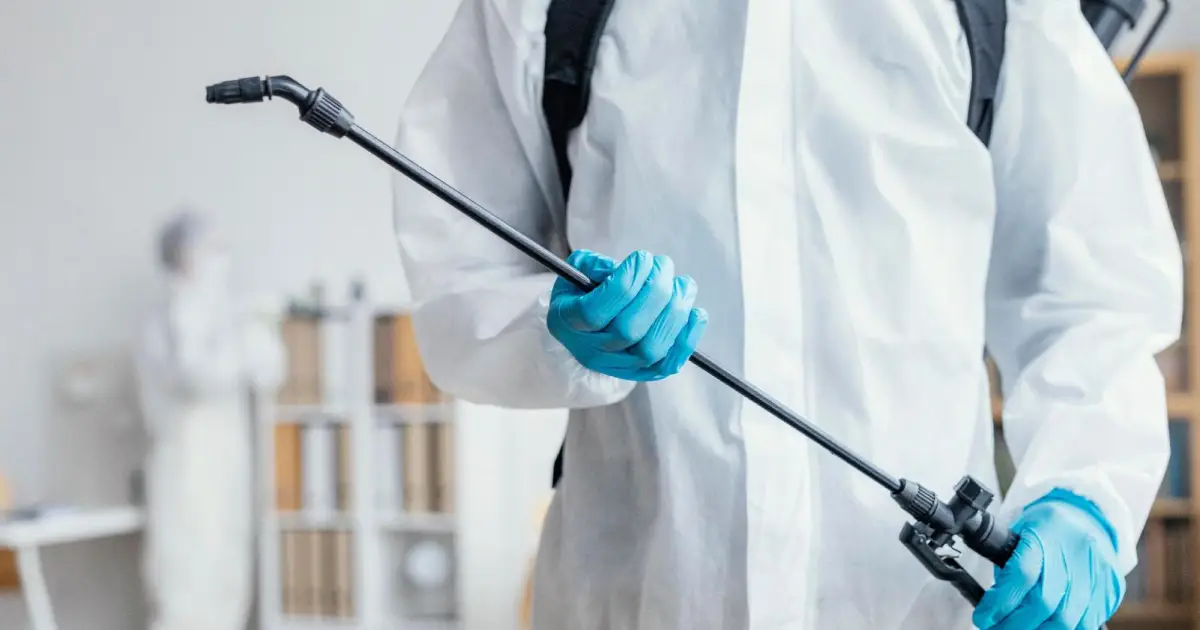Setting the Stage: Getting Your Home Ready for Pest Control Services

Importance of Preparing Your Apartment for Pest Control
Preparing your home for a pest control service is a crucial step not just for the safety of your living space, but also to maximise the effectiveness of the treatment. Whether you're dealing with a seasonal pest invasion or ongoing issues with rodents or insects, understanding how to prepare your apartment for pest control is essential. Proper preparation ensures that the pest extermination service can be performed efficiently and with the best possible outcomes. When pest control professionals enter your home, they need clear access to areas typically invaded by pests, such as corners, baseboards, and behind appliances. By decluttering these areas and following specific preparation steps, you can facilitate a more thorough treatment. Additionally, proper preparation helps protect your personal belongings and ensures that sensitive areas, like kitchens and bedrooms, are safeguarded against potential contamination from pesticides.
The effectiveness of pest control treatments is greatly enhanced when your home is prepared correctly. This involves physical preparation and understanding and implementing recommendations provided by your pest control service. These preparations include securing household items, covering open food containers, and ensuring that pets are safely relocated during the treatment. Such steps help create an environment where pest control solutions are more effective, leading to longer-lasting protection against unwanted guests. Incorporating these practices not only supports the work of the pest control technicians but also contributes to a safer, more pest-resistant home environment. As you read on, you'll discover detailed steps and practical tips on preparing different areas of your apartment, ensuring that when the pest control team arrives, they can go straight to work, giving you the best possible defence against pests.
What Does Pest Control Preparation Involve?
When facing a pest control treatment, knowing how to prepare your apartment for pest control can significantly impact the success of the process. Basic preparation steps are crucial to ensure the effectiveness of the pest control services. First and foremost, declutter your living spaces. Clear out items from areas where pests typically hide, such as corners, baseboards, and under appliances. This not only allows pest control professionals to reach these critical spots but also helps in identifying the extent of the infestation. Additionally, securing your food and medications is essential. Ensure all open food containers are sealed tightly and stored away. Items like toothbrushes, cooking utensils, and children's toys should also be covered or stored safely to prevent contamination from pesticides. Moreover, pets should be relocated temporarily to safeguard their health. Properly covering aquariums and birdcages can protect aquatic and avian pets from airborne chemicals.
The benefits of these preparation steps are manifold. Firstly, they allow the exterminators to perform a more thorough and efficient treatment, targeting pests in hard-to-reach places. Secondly, they help protect your household items and living spaces from potential contamination. This preparation ensures that the treatment's effectiveness is maximized, leading to longer-lasting results and a pest-free home. As you implement these strategies, you're not only facilitating a smoother pest control process but also contributing to the overall safety and hygiene of your living environment. Taking these measures seriously can make a significant difference in the success of your pest control treatment.
Before the Pest Control Team Arrives
Clearing the Area
When preparing your apartment for pest control, start by thoroughly decluttering your home. Remove items from areas where pests typically hide, such as corners, baseboards, and under appliances. Clear the floors of loose items like toys, clothing, and other personal belongings, and move furniture away from the walls to provide pest exterminator services with full access to critical treatment areas. This not only allows for a thorough and efficient pest control treatment but also helps identify any signs of pest activity that might otherwise be hidden. Additionally, ensure the safety of your pets by removing them from the treatment areas. Ideally, have a friend or neighbour look after your pets during the treatment, or confine them to a room that will not be treated. For fish tanks, cover them with plastic wrap turn off air pumps to prevent contamination, and cover bird cages with cloth or plastic to shield them from airborne chemicals. These steps protect your pets' health and contribute to a safer and more effective pest control process.
Securing Food and Medications
Securing food and medications is essential to avoid contamination from pest control treatments. Begin by sealing all open food containers and storing them in the refrigerator or airtight containers. Clear away or cover items commonly left on kitchen counters, such as bread, fruits, and snacks, to prevent exposure to pest control sprays. Additionally, remove or cover utensils, cookware, and small kitchen appliances to keep them safe from chemicals. Medications should be placed in sealed plastic bags or containers and stored away from treatment areas, particularly in kitchens and bathrooms where pest control chemicals are often used. By securing these items, you protect them from potential chemical exposure, ensuring the safety and health of your household. These precautions not only safeguard your belongings but also enhance the effectiveness and safety of the pest control process, providing peace of mind during and after the treatment.
Special Considerations for Different Areas of Your Home
Bedroom Preparation
Preparing your bedroom for pest control is crucial to ensure thorough treatment and to protect your personal items. Start by stripping your bed of all linens, including sheets, pillowcases, and comforters, and washing them in hot water to eliminate any pests or eggs. Store clean linens in sealed plastic bags until after the treatment. Remove all personal items from bedside tables, dressers, and under the bed. Place these items in sealed containers or bags to prevent contamination from pest control chemicals. Addressing common concerns, yes, professional pest control services often spray in bedrooms to target pests that may hide in furniture and bedding. To prepare, ensure all surfaces are clear and accessible. Cover or store away any valuable or sensitive items to protect them from chemical exposure. This preparation not only facilitates effective pest control but also safeguards your belongings.
Kitchen and Bathroom Readiness
Properly preparing your kitchen and bathroom is vital for effective pest control and to avoid contamination of food and personal items. Begin by emptying cupboards and drawers, particularly those that store food, utensils, and cookware. Store these items in sealed containers or relocate them to an area that will not be treated. Cover or remove small kitchen appliances to protect them from pest control sprays. Addressing common questions, yes, you generally need to empty cupboards for pest control, especially if the treatment targets pests like cockroaches that frequently inhabit kitchen spaces. As for cleaning, it’s best to clean before the pest control treatment to remove any food residues and crumbs that attract pests. After the treatment, avoid cleaning for a specified period as advised by your pest control provider to allow the chemicals to work effectively. By following these steps, you ensure a comprehensive treatment and protect your household from potential contamination.
Safety Measures During Pest Treatment
During the Treatment
Knowing what to do during pest control treatment is crucial for both safety and effectiveness. Here are six essential safety measures to follow:
Leave the House: If possible, vacate the apartment during the treatment, especially if there are young children, pregnant women, or individuals with respiratory issues. This reduces exposure to chemicals.
Close Windows and Doors: Ensure all windows and doors are closed to contain the chemicals within the targeted areas and prevent them from spreading to non-targeted areas.
Turn Off Ventilation Systems: Switch off air conditioning and ventilation systems to avoid circulating chemicals throughout the apartment.
Avoid Treated Surfaces: Do not touch or walk on treated surfaces until they are completely dry. Contact with wet chemicals can be harmful.
Follow Professional Instructions: Adhere to any specific instructions given by pest control professionals, such as keeping certain rooms off-limits for a designated period.
Keep Pets Away: Ensure pets are kept away from the treatment areas to protect them from exposure to harmful chemicals.
These measures ensure the safety of your household while allowing the pest control treatment to be effective.
After the Treatment
After the pest control treatment, follow these steps to maintain safety and cleanliness:
Wait Before Re-entering: Allow the recommended time to pass before re-entering treated areas, usually a few hours, to let chemicals settle and dry.
Ventilate the Home: Open windows and doors to air out the apartment and disperse any lingering fumes.
Avoid Immediate Cleaning: Refrain from mopping or washing treated surfaces for at least a week to maintain the effectiveness of the treatment.
Dispose of Exposed Items: Safely dispose of any food or items that may have been exposed to chemicals during the treatment.
Vacuum-Treat Areas: If advised by your pest control provider, vacuum-treat the area to remove dead pests and residues.
Monitor for Pest Activity: Keep an eye on treated areas for any signs of pest activity and report these to your pest control provider for follow-up if needed.
Maximizing the Effectiveness of Pest Control
Long-Term Prevention Tips
To maintain a pest-free home after professional pest control services, follow these essential tips:
Keep Your Home Clean: Regularly clean floors, countertops, and other surfaces to remove food debris that attracts pests. Pay special attention to kitchen areas where crumbs and spills are common.
Seal Entry Points: Inspect your home for cracks, gaps, and holes in walls, windows, and doors. Use caulk or weatherstripping to seal these entry points and prevent pests from entering.
Proper Food Storage: Store all food items in airtight containers to keep pests from accessing them. Ensure that pet food is also stored securely.
Manage Waste: Dispose of garbage regularly and use bins with tight-fitting lids. Clean the bins frequently to prevent odours and residues that can attract pests.
Control Moisture: Fix leaky pipes, faucets, and other sources of water to reduce moisture levels in your home. Use dehumidifiers in damp areas like basements and bathrooms.
Regular Inspections: Conduct routine inspections of your home, particularly in hidden or less frequently accessed areas such as attics, basements, and behind appliances.
Outdoor Maintenance: Keep your yard well-maintained by trimming bushes, trees, and other vegetation away from your home. Remove standing water from gutters and other areas to prevent breeding grounds for pests.
Professional Check-Ups: Schedule regular pest control inspections and treatments, at least quarterly, to ensure ongoing protection and to address any new pest issues promptly.
How Frequently Should Professional Pest Control Be Conducted?
For optimal results, it's recommended to schedule professional pest control services at least quarterly, or four times a year. However, the frequency can vary depending on your location, the type of pests common in your area, and the severity of any infestations. Regular treatments help to maintain a protective barrier against pests, address any new infestations quickly, and keep your home pest-free year-round. Consulting with your pest control provider will help determine the best schedule for your specific needs.
Conclusion
Preparing your home for pest control is a vital step in ensuring the safety and effectiveness of the treatment. By understanding how to prepare your apartment for pest control, you can create an environment that allows pest control professionals to work efficiently and thoroughly. From decluttering your living spaces and securing food and medications to taking special precautions in bedrooms and kitchens, each step plays a crucial role in maximising the success of the pest control process.
Following these preparation steps not only enhances the effectiveness of the pest treatment but also protects your household from potential chemical exposure. Remember to remove pets, cover sensitive items, and adhere to the safety measures outlined during and after the treatment. By implementing these practices, you can enjoy a pest-free home and maintain a safe and healthy living environment. Take the time to prepare properly, and you’ll ensure that your pest control treatment is both safe and effective, providing long-lasting protection for your home.
